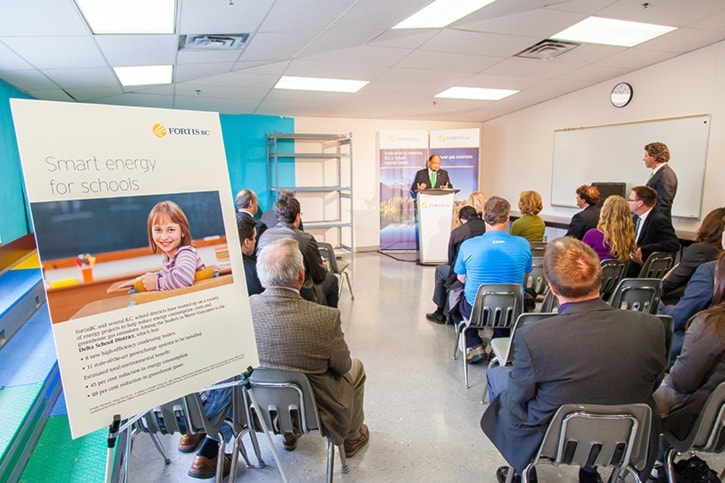The Delta School District recently entered into a 20-year partnership with FortisBC to provide thermal energy for 19 buildings, but a Delta engineer warns there are hidden costs to the project.
The $6.4 million project—with $5 million coming from Fortis and $1.4 million from a provincial green energy fund—was attractive to the school district because the capital costs are being paid by Fortis.
But Neil Caldwell, an energy conservation engineer who lives in Delta and has children in the school district, says the economics for the project don't make any sense.
"Geoexchange can be a great application for some projects, especially new construction, however, retrofitting them into an existing school is very expensive," says Caldwell, adding taxpayers will likely be paying the costs for years to come.
Caldwell pointed to comments made by the B.C. Utilities Commission—which is responsible for regulating rates and service quality in natural gas and electricity utilities—in its review of the project prior to approval. The panel wrote that it was concerned with the cost risks of the school district assuming a cost of service model with Fortis.
The panel also warned about increased operating costs because of greater fuel requirements and the need to purchase additional carbon offsets to meet the requirements of carbon neutrality. With few performance guarantees, the school district has little control over costs, it added.
Proponents of the project have claimed the contrary—that reduced natural gas usage means the school district expects to save $180,000 a year, and that energy output will be reduced by nearly half. Greenhouse gas emissions are also expected to be cut by 69 per cent.
The school district was originally approached by Fortis in late 2009 during a time when it was looking at finding more energy efficient replacements for gas-fired furnaces that had reached the end of their lifespan.
"What we wanted to do was get away from spending considerable taxpayer dollars on replacing and operating the equipment, but at the same time we wanted to reduce our need for energy to heat our buildings and as a result pay less on our carbon taxes and carbon offsets," says Frank Geyer, director of facilities and planning for the school district.
But that answer doesn't satisfy Caldwell.
"Vicki Huntington was quoted as stating the tunnel should not be replaced at any cost, and greenhouse gas reductions should not be pursued at any cost either."
"The technology chosen by Delta SD for this project is expensive—more expensive than some available alternatives," the B.C. Utilities Commission wrote. However, in approving the deal, the panel acknowledged the school district needs to replace aging infrastructure and the project gives it "the opportunity to reduce its GHG emissions while helping to mitigate its exposure to potentially increasing carbon offset costs in the future."
Because Fortis came to the school district with the proposal, some energy providers are also miffed at the sole source contract. Darryl McCulley, B.C. regional manager at Smith Energy, says costs have already escalated. He says that between a March 15, 2011 school board meeting when trustees were presented the project, and the final agreement in February, 2012, capital costs had increased by 90 per cent, or $1.5 million.
But Geyer says McCulley is merely criticizing the project because his company is a competitor with Fortis. The school district voluntarily went through a B.C. Utilities Commission process to further provide transparency and protection for taxpayers, he added.
Construction began Oct. 1 and is expected to be completed by 2014.
